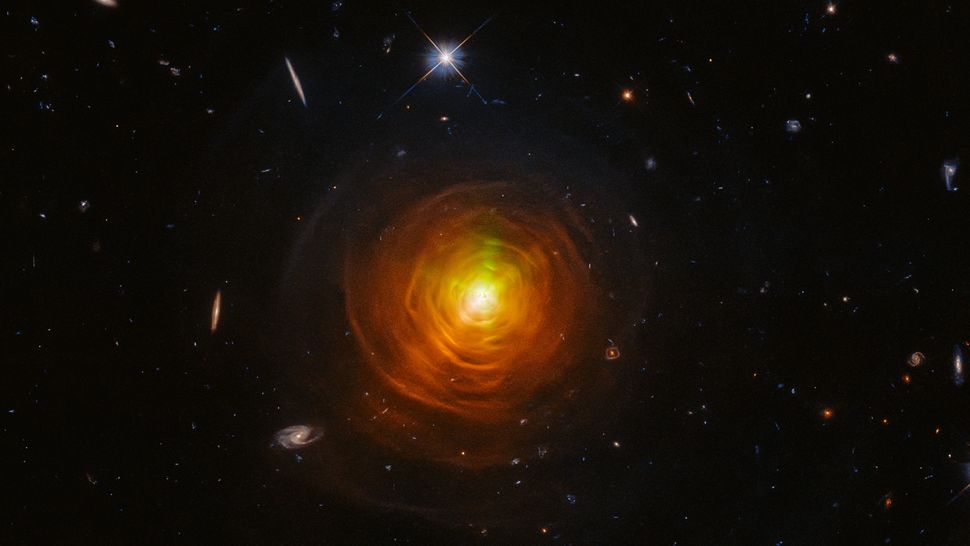Mysterious, ultraheavy stars are gobbling up atmospheres like carrion, new study hints
By Paul Sutter published 22 hours ago
Strange, ultraheavy stars that are rich in barium grow massive by cannibalizing their companions, scientists discover after finally catching these stellar leeches in the act.

A bright red/orange star shines against dark space
A Hubble Space Telescope view of the red giant star CW Leonis, in the constellation Leo. The nearby star 58 Leonis is thought to be a rare 'barium star'. (Image credit: ESA/Hubble, NASA, Toshiya Ueta (University of Denver), Hyosun Kim (KASI))
A strange type of ultraheavy star grows massive by feeding on the bloated, dying body of its companion, new research confirms.
While astronomers have long suspected that these "barium stars" — named for their unusually high levels of the heavy element barium — come from feeding on material from a companion, now they've finally caught these stellar leeches in the act.
Astronomers William P. Bidelman and Philip Keena first discovered the stars in 1951 after noticing high levels of barium in their atmospheres. All stars are made almost completely of hydrogen and helium, but they contain small traces of heavier elements such as barium.
Barium stars are on another level. In addition to barium, they contain large amounts of other heavy elements that are forged in one particular way, known as the s-process.
More:
https://www.livescience.com/space/astronomy/mysterious-ultraheavy-stars-are-gobbling-up-atmospheres-like-carrion-new-study-hints
